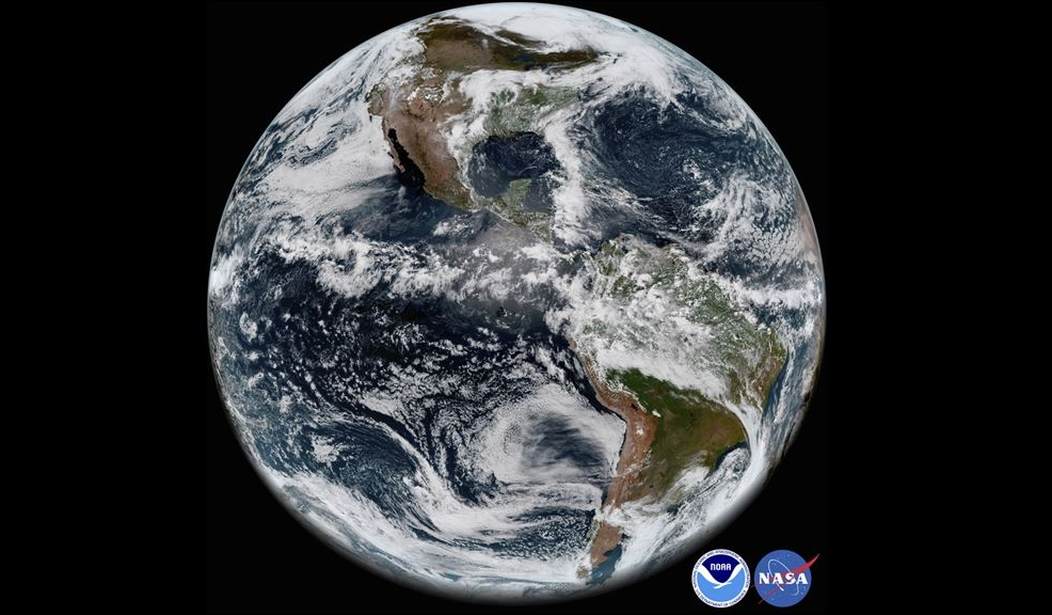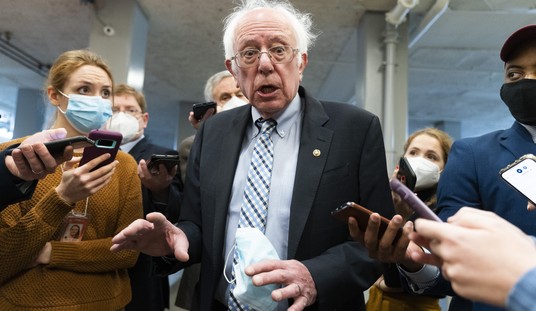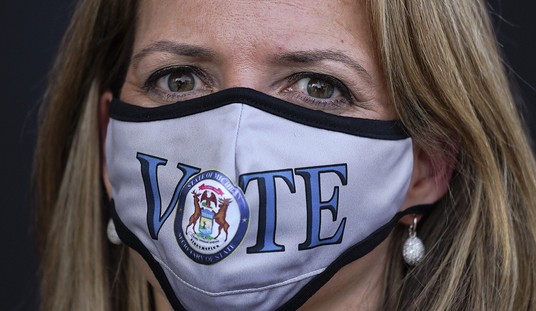Every four years since 1997, the US Office of the Director of National Intelligence produces a document entitled, “Global Trends.” The document provides a best-guess projection of the US intelligence community’s assessment of major items that will shape the future strategic environment – in this case, in the year 2040. It also provides a window into the strategic priorities of the US government. While the document was largely developed during the Trump Administration, it would not have been published in March 2021 without approval by the Hologram et al. if the document had contained anything deemed “controversial” from a socialist Democrat ideological point of view. See if you can pick some of that out in the below excerpts from the executive summary. My comments are provided in brackets [ ].
Introduction
First, we examine structural forces in demographics, environment, economics, and technology that shape the contours of our future world. Second, we analyze how these structural forces and other factors—combined with human responses—affect emerging dynamics in societies, states, and the international system. Third, we envision five plausible scenarios for the distant future in 2040.
[Conspicuous by its absence is any discussion of general military capabilities in the above list of structural forces. All of the other factors heavily influence the strategic imperatives driving the development of new military capabilities among potential US adversaries and also our allies, and military might is routinely used by rogue states for a variety of reasons, including intimidation and acquisition of resources. Consider Communist China’s ongoing intimidation of the Philippines in the Whitsun reef dispute as but one current example.]
Structural Forces
The most certain trends during the next 20 years will be major demographic shifts as global population growth slows and the world rapidly ages. Some developed and emerging economies, including in Europe and East Asia, will grow older faster and face contracting populations, weighing on economic growth. In contrast, some developing countries in Latin America, South Asia, and the Middle East and North Africa benefit from larger working-age populations, offering opportunities for a demographic dividend if coupled with improvements in infrastructure and skills. Human development, including health, education, and household prosperity, has made historic improvements in every region during the past few decades. Many countries will struggle to build on and even sustain these successes. Past improvements focused on the basics of health, education, and poverty reduction, but the next levels of development are more difficult and face headwinds from the COVID-19 pandemic, potentially slower global economic growth, aging populations, and the effects of conflict and climate. These factors will challenge governments seeking to provide the education and infrastructure needed to improve the productivity of their growing urban middle classes in a 21st century economy. As some countries rise to these challenges and others fall short, shifting global demographic trends almost certainly will aggravate disparities in economic opportunity within and between countries during the next two decades as well as create more pressure for and disputes over migration.
In the environment, the physical effects of climate change are likely to intensify during the next two decades, especially in the 2030s. More extreme storms, droughts, and floods; melting glaciers and ice caps; and rising sea levels will accompany rising temperatures. The impact will disproportionately fall on the developing world and poorer regions and intersect with environmental degradation to create new vulnerabilities and exacerbate existing risks to economic prosperity, food, water, health, and energy security. Governments, societies, and the private sector are likely to expand adaptation and resilience measures to manage existing threats, but these measures are unlikely to be evenly distributed, leaving some populations behind. Debates will grow over how and how quickly to reach net zero greenhouse gas emissions.
[The first two sentences of the second paragraph, of course, are nonsense and reflect the prevailing leftist belief in “anthropogenic global warming” despite 50 years of failed predictions of economic disasters from AGW proponents. “More extreme storms, droughts, and floods; melting glaciers and ice caps; and rising sea levels will accompany rising temperatures.” Why not just say it: “global warming”? Because the predicted warming has not materialized, and the phrase has evolved to “climate change” – but we all know what they really mean. And as for “melting ice caps,” Arctic ice volume is a far better metric of how Arctic ice is faring, but it is never referred to by the activists. This graph (Figure 1) from the Polar Science Centre shows that volume bottomed out in 2010 and has increased a bit since then. The deceptive straight line “death dive” in the figure starting from 1979 is when Arctic ice was at a maximum volume that was last reached in 1910. In short, ice volume fluctuates over the decades. Global warming continues to be used by the American Left/Democrat Party to “justify” massive structural economic changes without any basis in science or regard to the negative effects of “green new deals,” especially on developing nations.]
During the next two decades, several global economic trends, including rising national debt, a more complex and fragmented trading environment, a shift in trade, and new employment disruptions are likely to shape conditions within and between states. Many governments may find they have reduced flexibility as they navigate greater debt burdens, diverse trading rules, and a broader array of powerful state and corporate actors exerting influence. Large platform corporations—which provide online markets for large numbers of buyers and seller—could drive continued trade globalization and help smaller firms grow and gain access to international markets. These powerful firms are likely to try to exert influence in political and social arenas, efforts that may lead governments to impose new restrictions. Asian economies appear poised to continue decades of growth through at least 2030, although potentially slower. They are unlikely to reach the per capita gross domestic product (GDP) or economic influence of existing advanced economies, including the United States and Europe. Productivity growth remains a key variable; an increase in the rate of growth could alleviate many economic, human development, and other challenges.
[The economic trends discussion misses a key driving factor: the ongoing ideological struggle between Communist China’s “authoritarian capitalism” and the West’s free enterprise system that has dominated the world economy since World War II (refer to the Bretton Woods agreement). Managed economies have failed throughout human history while free enterprise has delivered the most economic benefits for the most people ever! China’s managed economy is propped up by a massive economic spying campaign resulting in extensive technology theft, as well as a mercantilist approach that exploits international systems such as the World Bank, World Trade Organization, and International Monetary Fund to achieve its goals. Which system will dominate world commerce in 2040?]
Emerging Dynamics
Within societies, there is increasing fragmentation and contestation over economic, cultural, and political issues. Decades of steady gains in prosperity and other aspects of human development have improved lives in every region and raised peoples’ expectations for a better future. As these trends plateau and combine with rapid social and technological changes, large segments of the global population are becoming wary of institutions and governments that they see as unwilling or unable to address their needs. People are gravitating to familiar and like-minded groups for community and security, including ethnic, religious, and cultural identities as well as groupings around interests and causes, such as environmentalism. The combination of newly prominent and diverse identity allegiances and a more siloed information environment is exposing and aggravating fault lines within states, undermining civic nationalism, and increasing volatility.
[Once again, “environmentalism” rears its ugly head. The global elite are using the issue to remake the world economy in the interests of controlling it from the top down. The current push is for a “global green new deal,” which even has its own website here. Ideological competition is also missing from the discussion about how societies are evolving. For example, cultural Marxism – the cancel culture – is currently dominating US society. Will it prevail over the long term, or will those alien concepts be expunged from America by traditional constitutionalists?]
At the state level, the relationships between societies and their governments in every region are likely to face persistent strains and tensions because of a growing mismatch between what publics need and expect and what governments can and will deliver. Populations in every region are increasingly equipped with the tools, capacity, and incentive to agitate for their preferred social and political goals and to place more demands on their governments to find solutions. At the same time that populations are increasingly empowered and demanding more, governments are coming under greater pressure from new challenges and more limited resources. This widening gap portends more political volatility, erosion of democracy, and expanding roles for alternative providers of governance. Over time, these dynamics might open the door to more significant shifts in how people govern.
[The “publics need and governments deliver” discussion is a false dichotomy straight out of Marx. The presumption is that governments are the providers of first and last resort in society, not the people themselves through their own endeavors. The former is socialism (either full or of the “corporate” variety), and the later is free enterprise (through limited government and low taxation). Only free enterprise lifts people out of poverty; socialism dispenses poverty for all while the elite at the very top of society retain most of the wealth and personal freedoms.]
In the international system, no single state is likely to be positioned to dominate across all regions or domains, and a broader range of actors will compete to shape the international system and achieve narrower goals. Accelerating shifts in military power, demographics, economic growth, environmental conditions, and technology, as well as hardening divisions over governance models, are likely to further ratchet up competition between China and a Western coalition led by the United States. Rival powers will jockey to shape global norms, rules, and institutions, while regional powers and nonstate actors may exert more influence and lead on issues left unattended by the major powers. These highly varied interactions are likely to produce a more conflict-prone and volatile geopolitical environment, undermine global multilateralism, and broaden the mismatch between transnational challenges and institutional arrangements to tackle them.
[The international discussion reflects a prevailing view in the State Dept and other federal agencies that a return to a multi-polar world is inevitable. That would be a natural view of the US foreign policy establishment because they have essentially been working since World War II to make that a reality! The US’s status as the single world superpower since World War II was willfully given away by the US political class, which has been hell-bent on shackling and undermining American dominance around the world. Who could not understand in 2021 that the Nixon-Kissinger “opening of Communist China” in 1972 and subsequent subsidizing of China’s economic development by the West since then has created the foundation for the multi-polar world of 2040? President Trump red-pilled many Americans about the deleterious effects of free trade with China at the expense of the US and the world. If only the State Dept and the intelligence community could recognize the failure of past US policies regarding China and do the hard work necessary to formulate a strategy to exploit ChiCom vulnerabilities, including demographics, absence of personal liberties, ChiCom-instigated genocides and ethnic cleansing, trade dependencies, worldwide recognition of ChiCom culpability for the virus pandemic (and the need for accountability and retribution), etc., in order to actually compete and win against the ChiCom military, economic, and political threat. Lastly, there is no mention at all of globalism and efforts in international institutions by globalists around the world to implement a “Great Reset” leading to a one-world government.]
Alternative Scenarios for 2040
In Renaissance of Democracies, the world is in the midst of a resurgence of open democracies led by the United States and its allies. Rapid technological advancements fostered by public-private partnerships in the United States and other democratic societies are transforming the global economy, raising incomes, and improving the quality of life for millions around the globe. The rising tide of economic growth and technological achievement enables responses to global challenges, eases societal divisions, and renews public trust in democratic institutions. In contrast, years of increasing societal controls and monitoring in China and Russia have stifled innovation as leading scientists and entrepreneurs have sought asylum in the United States and Europe.
[It is no surprise that the secularists who dominate the US government and the intel community gloss over the considerable effects of religion in their analysis. A missing element of this alternative scenario is the contribution that a religious revival could make in the Western world – particularly in the US. America is long overdue for a “Third Great Awakening.” The Second Great Awakening took place in the early 1800s and led to the propagation of Christian values and democracy across the world while galvanizing the development of altruistic institutions within the US and other Christian nations. The exposure of the massive corruption of the US political class and global elites over the past few years may very well turn the disgust felt by many believers and others into a moral revival – if not a revolution – that could shake the world. And then there is the potential for yet another Muslim resurgence and worldwide jihad…]
In A World Adrift, the international system is directionless, chaotic, and volatile as international rules and institutions are largely ignored by major powers like China, regional players, and nonstate actors. Organization for Economic Cooperation and Development (OECD) countries are plagued by slower economic growth, widening societal divisions, and political paralysis. China is taking advantage of the West’s troubles to expand its international influence, especially in Asia, but Beijing lacks the will and military might to take on global leadership, leaving many global challenges, such as climate change and instability in developing countries, largely unaddressed.
[“The West’s troubles” are largely self-inflicted. The American political class has lost its confidence and its way through the unwillingness to recognize and counter the cultural Marxism that has crept into virtually every US institution. As mentioned above, US-China policy since 1972 has been an abject failure, contributing to the current crisis of confidence among American elites. This alternative scenario will only occur if America’s cultural drift toward socialism continues unabated. In fact, a more likely alternative scenario given the current trajectory of world affairs would be the implementation of a one-world government in which the world economy and most aspects of human life would be managed/directed. But then the intel community wouldn’t want to let that cat out of the bag in terms of their future predictions.]
In Competitive Coexistence, the United States and China have prioritized economic growth and restored a robust trading relationship, but this economic interdependence exists alongside competition over political influence, governance models, technological dominance, and strategic advantage. The risk of major war is low, and international cooperation and technological innovation make global problems manageable over the near term for advanced economies, but longer-term climate challenges remain.
[No discussion of the ideological struggle nor the incompatibility between Communism and democracy (they are oil and water!), but the climate “challenge” is of course included. And a “restoration of a robust trading relationship” between the US and China implies acquiescence to Chinese mercantilism, economic espionage, and a continued integration of China into the world economy – a losing proposition if there ever was one! Right on cue, China apologist Henry Kissinger has recommended American acceptance of a “new global system” that would bring this scenario to fruition (just as he has planned since 1972). And then there’s that “longer-term climate challenges remain” nonsense again. The socialist Democrats, worldwide Left, and globalists are hell-bent on their Great Reset no matter the adverse consequences, and green policies are intended to be the key enabler.]
In Separate Silos, the world is fragmented into several economic and security blocs of varying size and strength, centered on the United States, China, the European Union (EU), Russia, and a couple of regional powers; these blocs are focused on self-sufficiency, resiliency, and defense. Information flows within separate cyber-sovereign enclaves, supply chains are reoriented, and international trade is disrupted. Vulnerable developing countries are caught in the middle with some on the verge of becoming failed states. Global problems, notably climate change, are spottily addressed, if at all.
[This scenario isn’t much different from “A World Adrift,” and in fact parallels the present situation. Where is the discussion of alliances and their importance in managing regional affairs?]
In Tragedy and Mobilization, a global coalition, led by the EU and China working with nongovernmental organizations and revitalized multilateral institutions, is implementing far-reaching changes designed to address climate change, resource depletion, and poverty following a global food catastrophe caused by climate events and environmental degradation. Richer countries shift to help poorer ones manage the crisis and then transition to low carbon economies through broad aid programs and transfers of advanced energy technologies, recognizing how rapidly these global challenges spread across borders.
[We finally get to the intel community’s “preferred scenario.” Their socialist green Utopia, if you will, triggered by the inevitable disaster associated with that reliable bugbear “climate change” – with only a cursory mention of the United States “following the lead of the EU and China” (or maybe the total collapse of the US as a world leader due to the continuing out-of-control cancel culture is implicit in this scenario)! In fact, this scenario may even have been concocted by the Biden regime to show their true intentions/desires: ceding world leadership to the EU and China. “Climate change, resource depletion, and poverty” just happen to be some of the top issues propagated by the ChiComs and their state-run media these days (not to mention their bought-and-paid-for Western allies in the political classes and media). The ChiCom media have been pushing green energy (they make solar panels for the world), food security, and alleviation of poverty (the latter two topics being very important for domestic Chinese political consumption in order to keep the Chinese Communist Party in power). “Low carbon economies” is a sick joke, particularly when the green movement ignores virtually all forms of truly zero-carbon nuclear energy. Ask the activists to compare the energy potential and heat exchange ratios of oil/gas/coal with that of wind and solar, and then get them to discuss how “green energy” (sans nuclear energy) is going to replace the energy production worldwide of so-called “fossil fuels.” Absurd.]
Conclusion. There is a lot of interesting analysis contained in the 156 pages of this latest edition of ODNI’s “Global Trends.” However, it must be carefully read with an eye on political and ideological content – and there is plenty of that to support Biden regime schemes/policies! There is plenty of room for dissenting views, too.
The end.














Join the conversation as a VIP Member